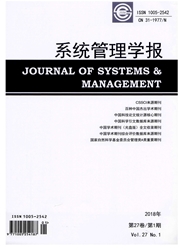

 中文摘要:
中文摘要:
分析了最小二乘支持向量机(LS—SVM)在交通安全预测中的优势,确定输入向量集合和输出向量集合,利用LS—SVM建立交通安全预测模型。将1953~2006年全国交通安全相关数据分为训练集和测试集,利用Matlab7.0进行仿真测试。通过训练LS—SVM得到模型具体参数值,然后对测试集数据进行预测,计算预测误差,并与神经网络模型、SVM模型预测结果进行对比。仿真结果表明,基于LS—SVM建立的交通安全预测模型比神经网络预测模型、SVM模型具有更高的运算速度和预测精确度。
 英文摘要:
英文摘要:
This paper analyzes the advantages of least square support vector machine (LS-SVM) in the prediction of traffic safety, decides the set of input vectors and output vectors and then establishes the model of prediction of traffic safety by using LS-SVM. During the course of predicting, the related data of nationwide traffic safety from 1953 to 2006 is divided into the training set and the testing set and is simulated by the use of Matlab7.0. The specific parameters of model are gained by LS-SVM training. The testing set data is predicted. Predictive errors are calculated and compared with the prediction results of support vector machine model. Simulation results represent that the model of prediction of traffic safety based LSSVM had lower computational cost and higher predictive accuracy than the neural network prediction model and the support vector machine model.
 同期刊论文项目
同期刊论文项目
 同项目期刊论文
同项目期刊论文
 期刊信息
期刊信息
